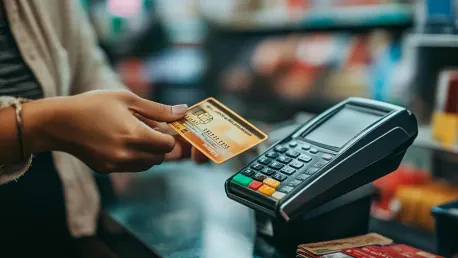In a rapidly changing digital landscape, security in payments is paramount, pushing industry leaders to innovate. With the Reserve Bank of India (RBI) mandating stronger authentication for digital transactions, major players like PayU and Mastercard are stepping up their game. PayU recently introduced Flash Pay, a biometric authentication solution, while also collaborating with Mastercard to bring secure payment passkeys to the Indian market. These innovations aim to make digital transactions not just safer, but also more user-friendly. This strategic move signifies a watershed moment in digital payment security, promising to redefine how users engage in financial transactions online.
Revolutionizing Authentication
Traditionally, online transactions in India relied heavily on one-time passwords (OTPs). However, OTPs have shown vulnerabilities, often leading to security breaches. Enter PayU’s Flash Pay—this new feature employs native device biometrics like fingerprint or facial recognition to authenticate payments. By utilizing biometric data, which is inherently difficult to forge, Flash Pay offers a more secure alternative to OTPs. The use of biometrics not only adds an extra security layer but also simplifies the user experience. Unlike OTPs that can get delayed or intercepted, biometrics provide instant verification, making transactions smoother and quicker. This shift is crucial, addressing both security and convenience, ensuring that digital payments are more reliable and less susceptible to fraud.
The traditional reliance on OTPs for securing online transactions in India has proved ineffective against the backdrop of a growing digital economy. PayU’s Flash Pay tackles these shortcomings by leveraging native device biometrics. Flash Pay utilizes facial recognition and fingerprint scanning capabilities inherent in modern smartphones and other devices. These biometrics are not only difficult to replicate but are also integrated seamlessly into the everyday use of technology by consumers. This innovation transforms the authentication process into a frictionless experience, where users no longer have to wait for OTPs that might get delayed or even stolen. Instead, with a simple touch or glance, transactions are verified, making digital payments significantly more secure and user-friendly.
Strategic Collaboration with Mastercard
To further enhance payment security, PayU has joined forces with Mastercard. This partnership aims to introduce payment passkeys to the Indian market—a passwordless authentication method leveraging device biometrics. Mastercard’s Payment Passkey Service is designed to provide a seamless, secure, and convenient way for consumers to authenticate transactions. The transition from OTPs to passkeys marks a significant innovation in the digital payment landscape. With OTP-related fraud cases on the rise, passkeys offer a robust solution to mitigate risks. They eliminate the need for traditional passwords and OTPs, streamlining the authentication process while maintaining top-notch security. This collaboration underscores the commitment of both companies to drive the next wave of digital payment innovations.
Mastercard’s Payment Passkey Service, developed in collaboration with PayU, seeks to further the biometric revolution in India’s digital payments. This service eradicates the need for traditional passwords and OTPs, moving towards a passwordless future where transactions are verified using the user’s biometric data. The introduction of passkeys aims to create a secure yet ultra-convenient payment environment. By eliminating the burden and risks associated with remembering or managing multiple passwords, users gain a seamless experience. The robust security offered by these passkeys, combined with their integration into PayU’s Flash Pay, aims to significantly reduce the incidence of fraud and bolster consumer confidence in digital transactions. This strategic collaboration is positioned as a decisive move towards making India’s digital payment ecosystem more secure and efficient.
Aligning with Regulatory Mandates
The RBI’s mandate for an additional layer of authentication is a critical factor driving these innovations. Compliance with regulatory requirements is essential for any financial service provider, and PayU’s Flash Pay and Mastercard’s payment passkeys are designed to meet these stringent standards. By adhering to the RBI’s directives, these solutions not only bolster security but also bring confidence to users and merchants alike. Businesses can integrate these advanced authentication methods without major system overhauls, thanks to the backward compatibility of these technologies. This seamless integration ensures that the transition to more secure payment methods is smooth for all stakeholders involved.
Aligning with the RBI’s mandates is a strategic imperative for PayU and Mastercard, which positions them ahead in the regulatory compliance curve. The RBI’s requirement for more secure authentication methods serves as a catalyst for the introduction of Flash Pay and payment passkeys. These innovations are rigorously designed to meet the higher standards set by regulators, promising not only enhanced security but also an unwavering trust in digital payments. Compliance with regulatory guidelines ensures that businesses adopting these technologies face minimal disruption. The backward compatibility of biometric authentication methods with existing systems allows for a smooth transition, enabling a quicker rollout and adoption across various sectors. This adaptability ensures that organizations can upgrade their security frameworks without undergoing extensive and costly system overhauls.
Mitigating Fraud and Enhancing User Experience
One of the primary motivations for moving away from OTPs is the high incidence of fraud associated with them. Sharing OTPs or delays in receiving them can compromise the security of transactions. PayU’s Flash Pay and Mastercard’s passkeys aim to address these issues head-on. Biometric authentication significantly reduces the chances of unauthorized access, as biometric data is unique to each individual and hard to replicate. This means fewer instances of fraud and a higher level of trust in digital payment systems. Moreover, the convenience of using biometrics translates to a better user experience. Users can enjoy faster, more intuitive transactions without the hassle of entering passwords or waiting for OTPs.
The push towards biometric authentication by industry leaders like PayU and Mastercard highlights a meticulous strategy to combat rising fraud. With incidents of OTP-related fraud increasing, the shift to biometrics is both timely and necessary. Biometrics such as fingerprints and facial recognition offer a unique and nearly foolproof method to verify user identity, drastically reducing the risk of unauthorized transactions. This security enhancement is coupled with improved user experience, where authentication becomes a part of the seamless interaction with technology. The reduction in steps required for transaction authentication translates to lower friction and higher satisfaction, making digital transactions quicker and more intuitive for users. This dual focus on security and convenience sets a new benchmark in the digital payment landscape, making transactions safer and more user-friendly.
Industry Implications and Future Trends
The adoption of biometric authentication by PayU and Mastercard sets a precedent for the entire digital payment industry. As more companies recognize the limitations of OTPs, we can expect a broader shift towards biometric solutions. This trend is not just about enhancing security; it also reflects the evolving expectations of consumers who seek both safety and convenience in their online transactions. Beyond the immediate benefits, these advancements pave the way for future innovations in payment security. As technology continues to evolve, so will the methods to protect digital transactions. The partnership between PayU and Mastercard exemplifies the type of strategic collaboration needed to stay ahead of cyber threats and provide secure, user-friendly payment solutions.
The shift from traditional OTPs to biometric authentication is likely to shape the future direction of digital payments globally. The repercussions of PayU and Mastercard’s pioneering moves will ripple throughout the industry, encouraging other providers to follow suit. As biometric data becomes the preferred method for authentication, the overall security framework for digital payments will be fortified. Consumers, who increasingly prioritize seamless yet secure transactions, are likely to drive the demand for such innovations. This move denotes a significant step towards an ecosystem where security and user experience are not mutually exclusive but rather complementary. Companies that fail to adopt these advancements may find themselves lagging in both consumer trust and expertise in fraud mitigation, thus underscoring the critical importance of embracing biometric solutions.
Broader Industry and Government Initiatives
Efforts to move beyond OTPs are not confined to PayU and Mastercard. The broader payment industry and government agencies are also exploring more secure alternatives. For instance, the Ministry of Home Affairs, in collaboration with SBI Cards, is developing a notification system for stolen OTPs. This initiative highlights the widespread acknowledgment of OTP vulnerabilities and the urgent need for more robust security measures. Such initiatives indicate a collective move towards enhancing payment security. By embracing biometric authentication and other advanced technologies, the industry aims to create a safer digital environment for consumers and businesses alike. These efforts demonstrate the commitment to proactively address security challenges and improve the overall trust in digital payment ecosystems.
The broader industry and government-led initiatives bolster the credibility and adoption of biometric authentication solutions. The Ministry of Home Affairs’ collaboration with SBI Cards to develop a notification system for stolen OTPs exemplifies these broader efforts. While this initiative serves as a stopgap, it also underscores the pressing need for more secure alternatives like biometrics. Such moves signal a unified approach towards fortifying digital payment security. The alignment of private sector innovations with government regulations and initiatives ensures a comprehensive strategy to counteract security threats. By taking a collaborative stance, the payment ecosystem can effectively mitigate risks, paving the way for a future where biometric authentication becomes the standard, not the exception.
Conclusion
In today’s rapidly evolving digital world, ensuring security in payment systems is critical, propelling industry leaders to continually innovate. In this context, the Reserve Bank of India (RBI) has mandated stricter authentication processes for digital transactions, prompting major companies like PayU and Mastercard to enhance their offerings. PayU recently launched Flash Pay, a biometric authentication feature designed to bolster security. Alongside this, PayU is teaming up with Mastercard to introduce secure payment passkeys in the Indian market. These collaborative efforts are aimed at making digital transactions not only more secure but also easier to use. This strategic partnership and the advancements it brings represent a significant turning point in digital payment security. These innovations promise to reshape how consumers handle online financial transactions, offering a safer and more streamlined experience. This marks a crucial development in the ongoing effort to secure digital payments, signaling a new era in how digital financial transactions are conducted.









